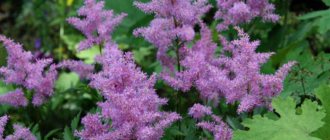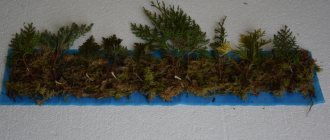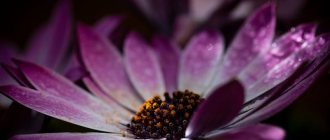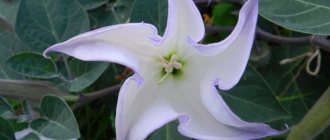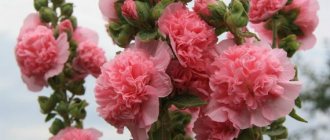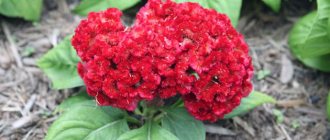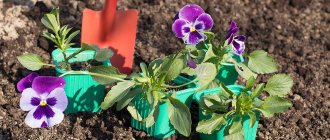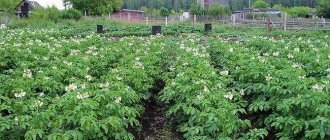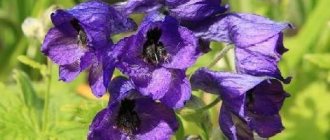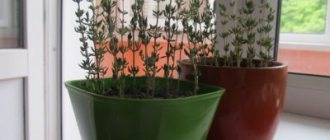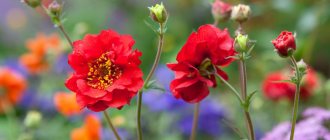It is considered a long-lived herbaceous species related to the saxifrage community. Various sources inform that the family contains from eighteen to forty species.
When naming the plant, the Scottish botanist decided to focus on the fact that the flower has matte leaf plates.
Lord Hamilton used “a” in the name, which translated “without”, but “stilbe” means “brilliance”. Astilbe is native to North America.
Description of astilbe
It is also found in East Asia and on the islands of Japan. The plant prefers to reproduce along the banks of various bodies of water and is found in broad-leaved forests; in general, the flower prefers places where there is no drought in the summer. Astilbe was brought to Europe at the end of the eighteenth, or maybe at the beginning of the nineteenth century.
Siebold and Carl Thunberg did this. In those days, they were seekers of various unknown cultures. From that very moment, this plant became in demand for planting in fairly shaded estates.
Botanical description
Astilbe is a herbaceous perennial plant of the Saxifraga family. Naturally found in North America, China and Japan. Prefers deciduous forests, banks of rivers and streams. In Europe, the flower has been grown since the 18th century. The plant adorns shady areas of gardens and greenhouses.
The flower has a powerful rhizome; the above-ground part dies off in late autumn. The stems of the plant are erect, reaching 2 m. The leaves are green, sometimes with a reddish tint, petiolate, simple or pinnate.
Astilbe flowers are collected in apical inflorescences in the shape of a panicle or pyramid. The color scheme includes white, pink, red, purple shades. Depending on the variety, flowering begins in June - August.
Important! More than 200 varieties of astilbe are cultivated in garden plots. The most popular varieties are Arends, Japanese, Chinese and simple-leaved.
Astilbe Arends includes more than 40 varieties. The varietal group is characterized by powerful spreading bushes up to 1 m high. Inflorescences are spherical or pyramid-shaped, white, red, pinkish. Flowering begins in July and continues for 40 days.
Chinese hybrids reach a height of 1.1 m. The leaves are large, the inflorescences are up to 40 cm long. The flowers are lilac, purple or white. Representatives of the group grow well in illuminated areas.
Photo of flowers of the Chinese variety Purpurlanze:
Japanese astilbe has a height of up to 80 cm. Pink or white paniculate inflorescences bloom in June. All varieties are resistant to cold weather.
Simple-leaved astilbe is a compact plant up to 50 cm high. Drooping inflorescences look impressive on the site. The color scheme is represented by white, pinkish and coral shades.
Astilbe looks good in group and mixed plantings. Low-growing varieties are used to decorate borders and ponds. The plant is combined with heucheras, hostas, and ferns.
Seeds from producers Gavrish, Tsentr-Ogorodnik, Agronika, and Aelita are available for sale. Agricultural companies sell both individual plant varieties and their mixtures.
Types of astilbe plant
Gardeners grow about twelve varieties of plants. But breeders have bred enough astilbe hybrids and number about two hundred of them. The most popular groups of plants include:
- rent;
- Chinese astilbe;
- Japanese hybrids;
- astilbe simplefolia.
Arends
There are nearly forty species. They were bred by crossing the most famous species of David and other varieties. These bushes are quite tall, they reach a meter in height, and also have a powerful structure and spreading branches.
The shape of this bush can be pyramidal or spherical. The leaves are dark green, and the inflorescences can be white to lilac, and sometimes red.
This species has a long flowering period from July to August, and usually lasts for forty days. The cultivation of this plant variety began in 1907, and the most excellent varieties were created.
Chinese astilbe
The height of the shrub can reach more than one meter. Large leaves with long petioles develop at the root system itself, and small leaves with a glossy surface are located along the entire length of the stem.
The inflorescences have a fairly compact structure and reach thirty-five centimeters in size. They have small flowers, mostly lilac, but are also found in white or pink.
This species has been cultivated since 1859. There are known varieties of this flower that are classified as low-growing. They reach sizes of only twenty-five centimeters. Their inflorescences are cone-shaped and this plant prefers sunny areas.
Japanese astilbe
It germinates quite thickly, and its height does not reach eighty centimeters. It also has glossy leaves. The inflorescences are paniculate and bear flowers, usually white or pink.
This species blooms earlier than all others, but when dried, its inflorescences give the garden plot a rather decorative appearance; they remain on the bush until the very end of the autumn period.
The cultivation of this variety began in 1837. More modern plant species are known for their cold resistance, as well as their non-fastidious establishment.
Simple leaf astilbe
This type of plant grows very poorly in places with low humidity and does not like heat. The bushes sometimes reach twenty and sometimes fifty centimeters in height. Thanks to its inflorescences, the bush takes on the appearance of an air plant.
Astilbe transplant
Having astilbe in your garden plot, you need to know not only about care, planting, propagation, but also have an idea about replanting this plant. With proper care for astilbe, its longevity can reach up to 20 years. The shortest term is approximately 7 years. It is recommended to clean the bushes, divide, plant or replant astilbe every 5 years. This is a procedure for the so-called plant rejuvenation. It will give strength, the greenery will grow thicker, the color will become richer. In addition, a large amount of harmful substances accumulate in the soil, diseases can develop, and various parasites can appear. Accordingly, any negative is a risk for the life of astilbe. Spring will be a good time for transplantation. It is necessary to disturb the bushes before it begins to grow. You can divide the rhizome in two and replant it. If the transplant is done in the fall, then you need to remove all the leaves, leaving only the branches with buds. After replanting, be sure to compact the soil and water it. This is necessary in order to remove unnecessary air from the soil.
Astilbe propagation
This plant reproduces in two ways, both seed and vegetative (by separating a shoot with formed buds from the root system). Inexperienced gardeners resort to root propagation, but only with the seed method does it become possible to form and develop a new variety of astilbe.
Propagation by seeds
Let's consider the seed method of propagating astilbe. How to do this? To sow seeds, you need to take a wide container with side sides of at least fifteen centimeters. Fill with a soil mixture of sand and peat in equal proportions.
Since astilbe is sowed at the beginning of spring, the surface of the prepared soil is covered with a layer of snow to a thickness of one centimeter. This helps the seeds grow deeper as the snow cover melts.
In the case when there is no longer snow lying on the street, it can be replaced with a layer that has accumulated in the freezer.
After the snow has completely melted, the crops are wrapped in transparent polyethylene and placed in a refrigerator, where they need to stay for at least three weeks, or rather until the first sprouts appear.
After a period of stratification, the seedlings are removed to a well-lit place with an acceptable temperature of around eighteen or twenty-two degrees.
Watering should be as careful as possible. It is necessary to moisten the soil itself, so it is better to use a syringe. Only after the sprout has formed two or three leaves can the seedlings be planted in separate pots.
Previously, we talked about meadowsweet and its care.
Propagation by cuttings
Propagation of astilbe by cuttings is considered successful when it is necessary to quickly produce a large number of plants of the same type.
- At the beginning of summer, they dig up the bush of the plant that needs to be propagated, shake it off the soil and use a knife to cut out cuttings with the remains of the rhizome; all leaves of the cuttings are removed except for one central one.
- The root tip must be treated with Kornevin and the cuttings planted in a flowerpot at a ten-centimeter distance from each other.
- The plant is sprayed and covered with a film on top, which is stretched over supports.
- Regular spraying, ventilation of cuttings and shelter are carried out, and systematic watering is also required.
- In a month and a half, the cuttings will have their own root system and begin to grow leaves.
It is not recommended to plant the plant immediately in open ground; they need to be transplanted into the ground, but temporarily. And after a couple of years, move it to a regular place.
Vegetative propagation
The roots of the stilba lie at shallow depths, they are woody and short.
Astilbe can grow in one place for a very long time. But the most spectacular and beautiful flowers are bushes 3-5 years old.
Old plants must be renewed so as not to lose their decorative properties. Shrubs can be divided for rejuvenation in both spring and fall.
After excavation, the rhizome is cut into pieces with a knife or shovel. Each one must have at least 3 buds to be successful.
This is important: in the first year after transplantation, it is recommended to hide young plants from wintering.
Planting an astilbe flower in open ground
Growing astilbe is not so difficult; you need to follow some care rules. The plant is moved outside in late spring or early summer.
An acceptable place for planting a plant is an area near the northern wall of a building, as well as where bushes or trees predominate. In general, the front garden should be well shaded.
But several species of this crop can grow in a lighted place, in which case their flowering will be quite spectacular, but not long-lasting.
Landing instructions
A non-competitive option for astilbe is a site near which there is a pool or fountain. It is best to plant the bush in soil that contains loam, and even better is one where the groundwater is not too deep.
Before planting, any area requires processing and preparation:
- First you need to dig up the ground and dispose of all the weeds.
- After this, it is necessary to nourish the soil with organic fertilizers. Both compost and rotted manure are suitable for this; you can use peat humus.
- A hole under the bush is dug about thirty centimeters deep.
- Between these landing holes the gap should be at least thirty centimeters. The holes also require feeding, but in the form of fertilizers containing minerals and wood ash.
- After complementary feeding, the holes are watered; when planting a plant, its bud is buried in soil, but not more than five centimeters.
- Then the ground needs to be trampled down and mulched with peat. For a layer of mulch, humus is also suitable, the thickness of which should reach five centimeters.
How to grow Astilbe from seeds
When grown in the Central Russian region and in the northern regions, Astilbe seeds do not have time to ripen, so you will not be able to use your own planting material. Plants grown in the southern regions have this opportunity, but only if they are seeds of non-hybrid varieties. Hybrids do not transmit the characteristic features of the mother bush through planting material. Instead of a beautifully flowering, lush plant, a completely mediocre specimen will grow.
Therefore, it is safer to purchase Astilbe seeds in specialized stores or flower nurseries. Growing Astilbe from such seeds for seedlings, proper planting and care will ensure maximum germination and a specific type of flower.
When to sow Astilbe for seedlings
Sowing for growing Astilbe for seedlings should begin in early March, since the seeds have a long germination period. For planting, in addition to planting material, you will need soil, seedling containers or cassettes.
Soil composition
You can grow Astilbe from seeds in purchased soil for seedlings or prepare it yourself. The structure of the soil mixture should be loose and light. This can be achieved by mixing peat and river sand in equal parts.
Containers or cassettes for growing seedlings are prepared 15 cm high with drainage holes to ensure water drainage.
The soil must be disinfected with a solution of Fitosporin-M, or kept at sub-zero temperatures on the street or balcony.
How to plant Astilbe seeds for seedlings
The seeds are carefully scattered on the prepared soil. For a more even distribution, you can mix them with sand. There is no need to sprinkle soil on top of the crops. Next, the plantings are sprayed with a sprayer. Since Astilbe seeds have low germination, they need to be stratified.
Stratification of Astilbe seeds at home
In this case, combined stratification is needed, that is, first the seeds are treated with cold, then heat treatment is necessary. Stratification of Astilbe seeds significantly increases the germination of planting material and has a beneficial effect on the development of seedlings.
The container with the crops is covered with glass or film. Then he is placed in a room with a temperature ranging from - 4 °C to + 4 °C for 20 days. At home, a refrigerator is used for these purposes. If you neglect the stratification procedure, then it will not come to the point of growing seedlings, there will be no seedlings at all, or only a minimum of seeds will germinate.
After 20 days, the container with seedlings is moved from cold storage to a room with a temperature of + 18-20 ° C. Glass or film should be removed. The seedlings will take another 2-3 weeks to appear. Seeds may begin to germinate even if they are in the cold, this is normal.
Next, it is necessary to control the soil moisture, preventing it from drying out and becoming waterlogged. The most effective method of watering when growing seedlings is to moisten the soil using a sprayer.
Conditions for seedlings
Creating conditions for growing seedlings is an important stage in caring for crops. Astilbe seedlings will develop correctly if the following requirements are met:
- temperature regime (18-20 °C);
- sufficient lighting (12-14 hours);
- watering mode;
- ventilation of the room.
Plant care
As we have already mentioned, astilbe has a certain property of its roots growing upward, while the lower parts of the plant die off. Therefore, over time, the bush cannot feed itself and needs regular care.
Watering
To do this, it is worth monitoring the condition of the soil; it should not be dry, that is, the plant must be watered regularly. By mulching, watering can be reduced.
And weeds will not grow among the bushes, and soil loosening will be significantly reduced. Also, a layer of mulch can protect the rhizome from overheating.
Humidity
The moisture consumed by a plant depends on its type and variety. When forming inflorescences, whatever the type of bush, it needs to be watered as often as possible and with plenty of water. In the driest period of time, the plant needs to be moistened twice a day, or rather in the early morning and late evening.
Top dressing
An Astilbe flower can exist in the same area for five or seven years. And only with proper care, with timely fertilization of the soil, astilbe can exist without replanting for about twenty years.
There is a rough plan for feeding a plant:
- In spring, the soil requires nitrogen fertilizers, for which humus may be suitable.
- In the middle of the first summer month, the flower needs potassium. A solution of potassium nitrate is used.
- At the end of flowering, you need to fertilize the plant with phosphorus. After fertilizing the soil, it must be loosened and mulched.
Planting astilbe in spring
Already from March 20, you can start planting. The selected area should be dug up with a bayonet, weed roots should be removed and compost and double superphosphate should be added. You can also use well-rotted manure and decomposed peat. It is enough to scatter 2 buckets of fertilizer over a square plot.
The top layer of soil must contain a sufficient amount of potassium and phosphorus. therefore, it is necessary to scatter 25 g of complex fertilizer per square over the surface of the earth.
Planting process
To plant astilbe seedlings, you need to dig holes approximately 25 cm deep. You need to water the hole, and then, when the water is absorbed, place the seedling in its center and straighten its roots. The voids are covered with earth and the plant is again watered abundantly.
The earth around the bush is compacted and necessarily mulched. When planting, it is important to ensure that the soil is 5 cm above the growing point.
It is very good to use pine litter as a mulching material for astilbe. If the flower garden is large and several seedlings are planted, a step of 60 cm is left between them. When planting in a border, a distance of 30 cm is left between the seedlings.
An astilbe bush can grow well in one place for about 10 years, but only if all care rules are strictly followed. Plants should be watered on time, fertilized, be sure to mulch and add fertile soil under the roots.
Diseases and pests
This alien plant has left its pests in its homeland. But still, there are dangers for him here too.
- Astilbe can be damaged by root-knot and strawberry nematodes.
- The slobbering pennice is also dangerous. It settles mainly in leaf cavities and over time, foamy secretions similar to saliva begin to form in that place. And inside there are cicada larvae. The leaves take on a diseased appearance, wrinkle and yellow spots form on their surface. When attacked by this pest, the flower dies completely or partially. To combat the instigator of the disease, karbofos and other specialized means may be suitable.
- Another pest is the strawberry nematode, which can settle on the leaves or buds of the plant, and also infect the flowers themselves. The bush becomes overgrown with dead brown spots, which slows down its growth process.
- The root-knot nematode spreads along the roots of the flower in the form of growths. The active life of the plant next year is already deteriorating as the galls become larger in size. The flowering of the bush slows down, and in some cases it may die.
Bushes require careful inspection, and those plants that look painful must be dug up and disposed of. It is very important at the very beginning of crop growth to weed the soil in time, and then the growing bush itself will suppress the growth of weeds.
For preventive purposes, astilbe must be treated with Fitoverm.
Seed propagation
In the central zone of Russia, Astilbe seeds do not have enough time for final ripening. But you can find them at the market and try to grow flowers from seeds at home.
Please note: seeds cannot be used to grow different varieties, as plants obtained from seed production do not retain their characteristics. This type of propagation is mainly practiced in selective breeding.
Astilbe seeds are very small and dense, so they need to be prepared before sowing - layering. Without such agrotechnical management of shoots, the shoots will not be complete or only individual plants will germinate.
Care after flowering
At the end of flowering, the inflorescences are not cut off immediately; they are still able to decorate the area with their appearance. But with the onset of cold weather, the bush is pruned to soil level.
The soil should be covered with a layer of mulch, especially if the bushes were replantable by dividing the root system. This type of planting is useful because with its help you can slightly add youth to the plant.
But the older the bush, the more difficult it will be to cope with the division of the rhizome, because every year the root becomes more powerful as it becomes lignified.
The root of the bush is divided at the very beginning of spring, and the presence of a bud is required on each shoot. Planting in this way promotes flowering of the bush next year.
These bushes must be mulched for the winter. If this method of planting was carried out in the autumn, then in addition to mulching, the plant is covered with a layer of branches, which will save it from all frosts in the cold season.
History of the origin of astilbe
In ancient times, on a forgotten land, there lived a young man named Pyush-Pak. And he had a fiancée, Yu-Li. The lovers were happy and were going to get married, but disaster struck. On the land where they lived, the supplies of plants suddenly dried up and Push-Pak had no choice but to go in search of new plantations with plants.
Early in the morning he came to say goodbye to his bride. Yu-li wished the groom a successful journey and a speedy return, and handed over a bag of seeds. “As you walk, throw seeds along the road,” she said goodbye. Push-Pak was surprised, but fulfilled the bride’s request. His journey was long, but one day he found the necessary plants, replenished his supply, began to get ready to go home and suddenly realized that he was completely lost. At first he thought it was okay, he was about to get out on the road, but the days passed, he kept wandering through the forests until he was completely exhausted and fell asleep, worn out by his aimless wandering.
I woke up, it was already dark. Despair rose in my throat. Suddenly, in the distance, he noticed a light. I looked closer, a little further, a second, a third. Track! Push-Pak guessed that these were flowers from the seeds given by the bride. The sparkle from the plants illuminated the young man’s way home. Yu-li waited for the groom. The lovers met and never parted again, and the flower that returned Push-Pak to his beloved was called “radiance” - Astilbe! Such a beautiful legend about astilbe was born in the East.
In fact, the exact origin of the species and the etymology of the name are not fully known. In Russian there are two forms of the name of the plant: “astilbe” and “astilbe”. In the first version, the word, like in the second, has a feminine gender, but is not declined. Example – Astilbe sinensis. Some sources claim that the name of the flower has Greek roots and means “very shiny.” According to another version, if you try to link the word to the Latin language, it may sound, on the contrary, “without shine.”
Astilbe was first described by Lord Hamilton in 1825, during a trip to China. It was there that the scientist first saw the flower. The wild-growing riverside astilbe seemed simple and inconspicuous to the botanist, which is why it got its name.
However, Hamilton took the plant to Europe, where for a long time the flower was grown exclusively as a cut flower. The decorative qualities of the flower remained unnoticed. This continued until Emil Lemoine, the son of the famous breeder Victor Lemoine, drew attention to the flower. Emil was the first among flower growers to start creating garden varieties of astilbe and achieved considerable success in this matter.
The German scientist Georg Ahrens made a huge contribution to the development of the species. His “romance” with astilbe continued throughout his life and turned out to be extremely fruitful. Under the leadership and with the direct participation of Arens, 84 varieties of crops were bred.
In addition to practical selection work, the scientist devoted a lot of time to scientific activities. It was he who first created the classification structure for astilbe species. After his death, for some time, the flower again fell into oblivion. This time until the middle of the last century. More precisely, until the 60s. So far, Dutch and Latvian scientists have not become interested in it. The Lemoine and Arends varieties bred during that period can already be called classics.
The main factor that returned the interest of ordinary gardeners and professional breeders was the fantastic frost resistance of astilbe. Under natural conditions, the plant grows in fairly harsh climatic conditions, where winter temperatures can drop to -37°C.
Today, astilbe is experiencing a second wave of popularity. The retro cultural fund is constantly replenished with new varieties. Many of them were presented for participation in international flower festivals and even became prize-winners. The plant is actively gaining positions in the TOP of garden plants, and it seems that this will last for a long time.
How does astilbe combine with other plants?
Astilbe and lilies look quite beautiful together
The perennial can be grown in open ground next to other crops. Decorative flowers go perfectly with coniferous bushes. With their monotonous greenery they look beautiful. In addition, such planting is beneficial for astilbe - the needles cover it from sunlight and create shade.
Growing tulips, periwinkles, irises, and hostas look great with flowers. If you plant bushes one by one on green grass, it will look incredibly beautiful and stylish.
In landscape design, astilbe bushes planted in dark areas will fit perfectly into the overall picture. The perennial can be planted individually or in group plantings. With their help, unusual landscape interiors are created for dark and semi-darkened places.
